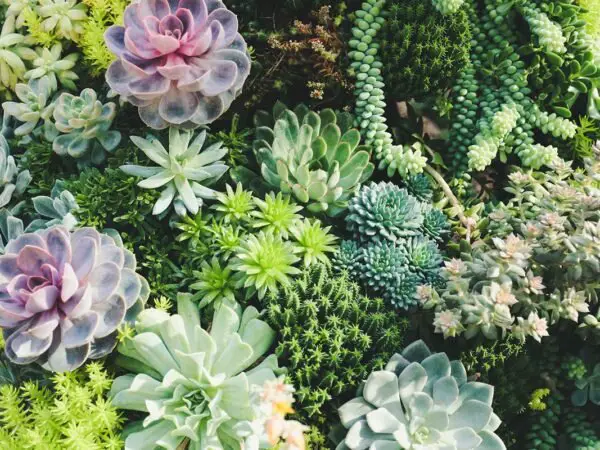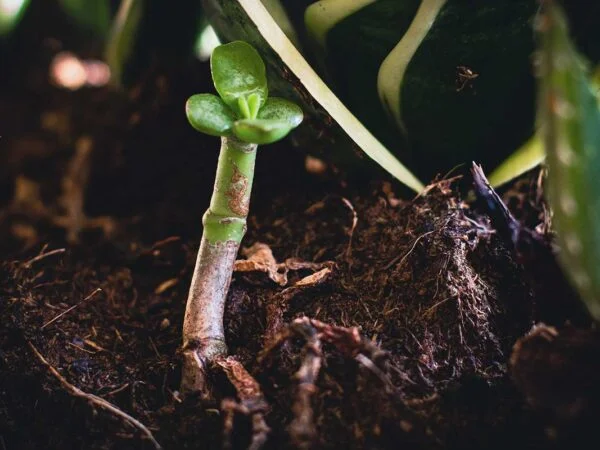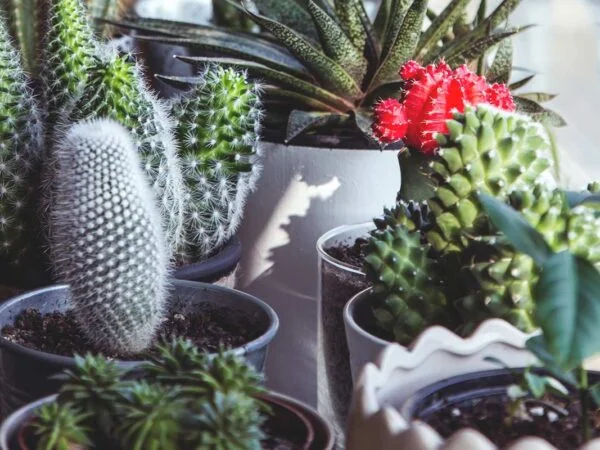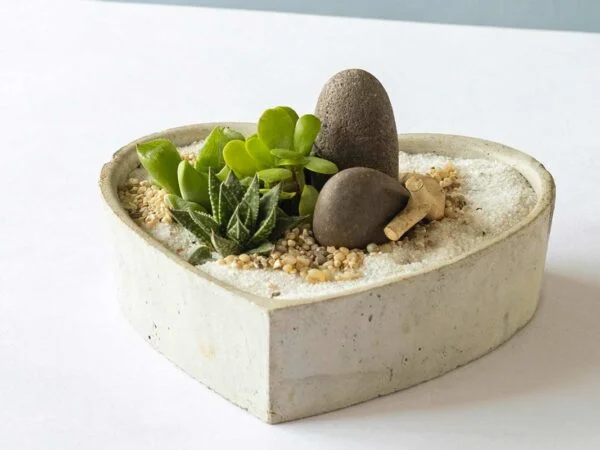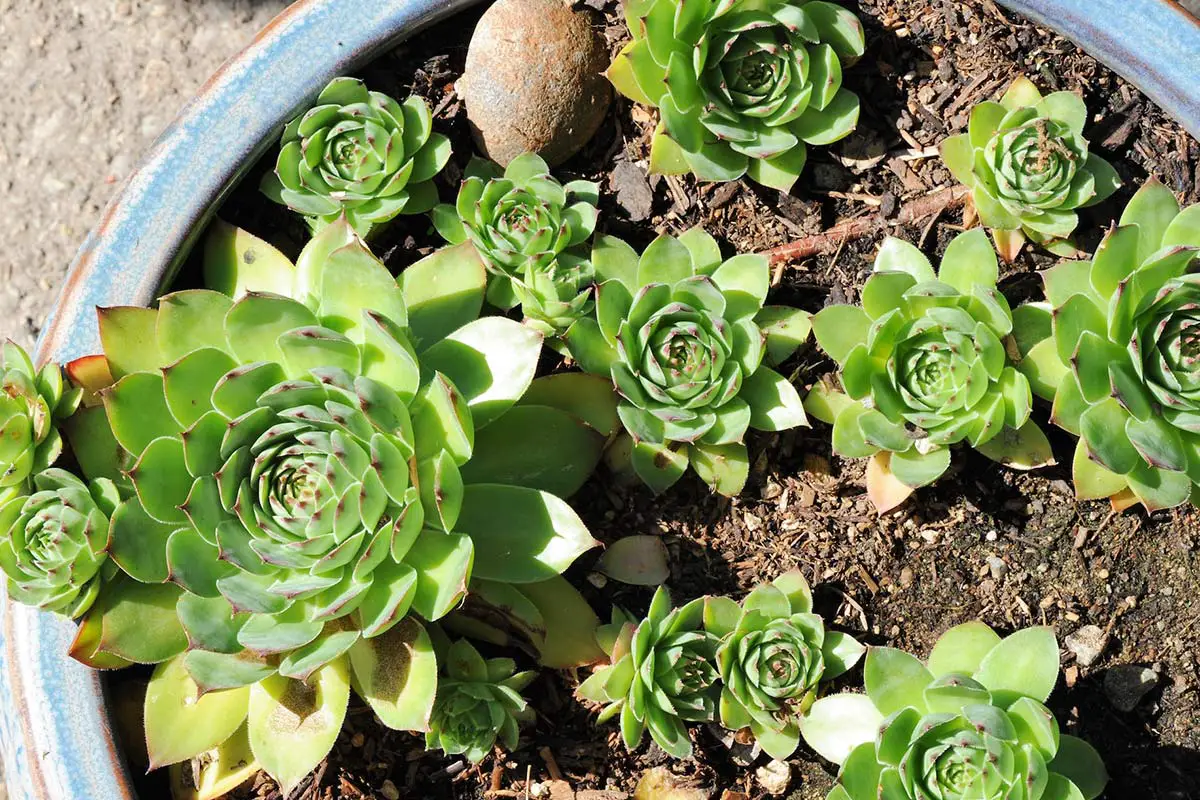
Looking to add a touch of natural elegance to your house? Look no further! Discover the captivating world of sempervivum, commonly known as houseleek. These stunning succulents are the perfect addition to any home or garden.
With their vibrant colors and unique rosette shapes, sempervivums bring a refreshing charm that is hard to resist. Not only are they visually appealing, but they also require minimal care, making them an ideal choice for both seasoned plant enthusiasts and beginners alike.
Join us on a journey to learn how to cultivate these remarkable plants in your own space. From windowsills to terrariums, sempervivums can thrive anywhere indoors, adding a touch of nature's beauty to your surroundings.
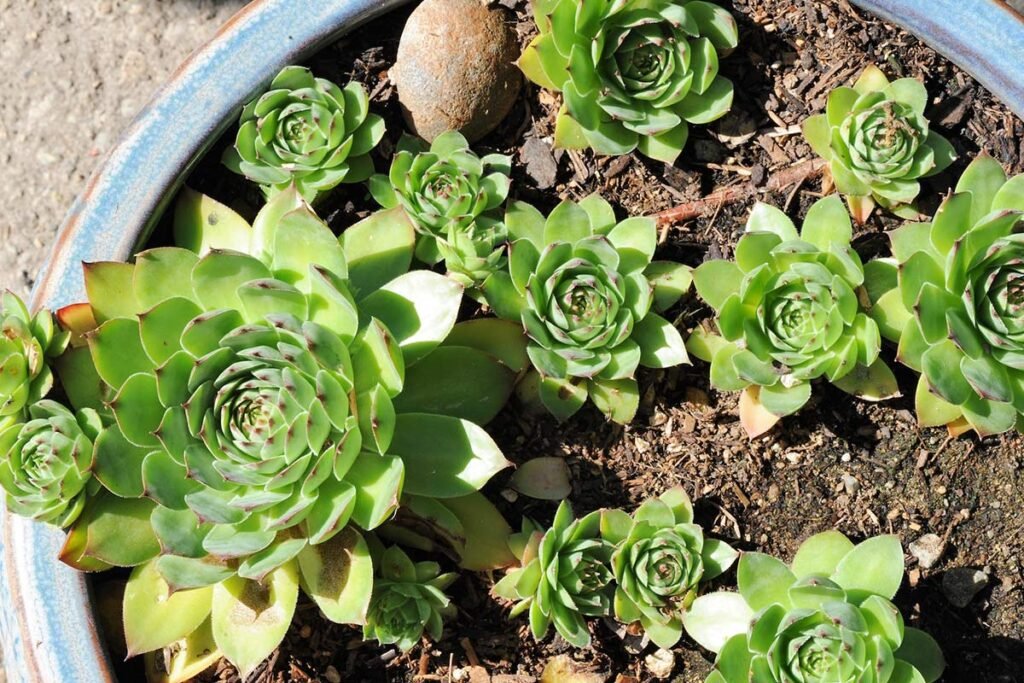
So why has sempervivum become such a popular choice among plant lovers? It's simple - their resilience and versatility make them stand out from the crowd. With an extensive variety of colors and textures available within the sempervivum family, you'll be inspired to create stunning displays that will leave everyone in awe.
Get ready to explore the endless possibilities of growing these 15 best sempervivum varieties at home. Let's dive into this enchanting world together!
15 of the best sempervivum to grow at home
Here are the 15 best sempervivum varieties that you should consider for your garden:
| Variety | Features | Pros | Cons |
| Cobweb Buttons | Web-like threads on foliage | Unique appearance, drought-tolerant, low maintenance | Susceptible to rot if overwatered |
| Black Prince | Deep burgundy leaves | Rich coloration, compact growth habit, cold hardy | Slow-growing |
| Oddity | Spiraling leaf arrangement | Fascinating growth pattern, tolerates various climates, forms dense rosettes | Can be prone to rot in humid conditions |
| Red Rubin | Bright red foliage | Vibrant color, drought-tolerant, suitable for rock gardens and containers | Less cold hardy compared to other varieties |
| Pacific Devil's Food | Dark red to almost black leaves | Striking coloration, low water requirements, adds contrast to mixed plantings | Requires well-draining soil to prevent root rot |
| Green Wheel | Green rosettes with wheel-like shape | Distinctive appearance, forms large colonies, tolerates heat and cold well | May become leggy if not provided enough sunlight |
| Ruby Heart | Deep red leaves with heart-shaped tips | Unique heart-shaped foliage, hardy nature, good for containers and rock gardens | Prone to crown rot if exposed to excessive moisture |
| Cobweb Sempervivum | Cobweb-like hairs on leaves | Intricate webbing adds visual interest, drought-tolerant, suitable for ground cover or hanging baskets | Vulnerable to mealybugs and spider mites |
| Commander Hay | Gray-green leaves with pink tips | Attractive color combination, hardy and adaptable, suitable for small spaces or rock gardens | Requires good air circulation to prevent fungal issues |
| Purple Beauty | Purple and green rosettes | Eye-catching color contrast, versatile in containers or rock gardens, withstands hot and cold climates | Slightly less cold hardy compared to other varieties |
| Jovibarba Hirta | Green rosettes with hairy leaves | Fuzzy texture adds uniqueness, is cold and heat tolerant, and suitable for alpine gardens | May produce fewer offsets compared to other sempervivum varieties |
| Green Ice | Pale green leaves with red tips | Delicate coloration, tolerates partial shade, compact growth habit | Can become leggy if not provided enough sunlight |
| Tectorum | Gray-green rosettes with fuzzy leaves | Soft, velvety texture, cold-hardy, suitable for rooftop gardens or containers | Slow to produce offsets, may require a longer time to fill in as ground cover |
| Gold Nugget | Yellow and green rosettes | Striking color combination, suitable for rockeries and mixed containers, withstands various climates | Prone to root rot if overwatered |
| Vera Higgins | Pink and green rosettes | Beautiful pastel coloration, compact growth habit, tolerates poor soil conditions | Susceptible to rot in excessively wet conditions |
Characteristics of Hens and Chicks Varieties
Understanding the unique characteristics that make hens and chick succulents stand out is essential for any gardening enthusiast. These fascinating plants, also known as sempervivum, offer a wide range of varieties with distinct features that make them a popular choice among plant lovers. Let's delve into the different growth habits, forms, offsets, resilience, and adaptability of hens and chicks.
Different Growth Habits and Forms
Hens and chicks come in various growth habits and forms, adding visual interest to any garden or indoor space. Some varieties feature rosettes with tightly packed leaves, while others display more open arrangements. The leaves can be thick or thin, smooth or textured, depending on the specific type. Each variety has its own charm, from the classic round-shaped rosettes to those with elongated or pointed leaves resembling tiny green fingers.
Ability to Produce Offsets
One of the most remarkable aspects of hens and chicks is their ability to produce offsets. These miniature versions of the parent plant emerge around the base, creating beautiful clusters over time. As these offsets grow larger, they can be easily separated from the main plant and transplanted elsewhere in your garden or shared with fellow gardening enthusiasts. This natural propagation process allows you to expand your collection effortlessly.
- Paeonia Obovata: A Comprehensive Guide to Woodland Peonies
- Bonsai Pear Tree: A Guide to Growing and Caring for Fruitful Bonsai Trees
Resilience and Adaptability
Hens and chicks are renowned for their resilience and adaptability to various growing conditions. They are drought-tolerant plants that can survive in arid environments where other plants struggle to thrive. Their ability to store water within their fleshy leaves enables them to endure extended periods without regular watering. Furthermore, they can withstand temperature fluctuations ranging from scorching summers to chilly winters.
These succulents are also adaptable. While they prefer full sun for optimal growth, some varieties perform well in partial shade as well. This flexibility makes them suitable for both outdoor gardens and indoor plant collections.
The options are endless. There is a wide array of varieties available, each with its own unique characteristics. Here are some of the best types to consider:
- Green Wheel - A compact variety with tight rosettes resembling miniature green wheels.
- Cobweb Buttons - Known for their web-like white hairs that cover the leaves, giving them an intriguing appearance.
- Red Tips - These varieties feature striking red or burgundy tips on their leaves, adding a vibrant touch to your garden.
With so many choices available, you can mix and match different varieties to create stunning arrangements that showcase the diversity of hens and chicks.
Laxmi Kamal Plant Types: A Unique Addition to Your Garden
Uncover the fascinating world of Laxmi Kamal plants, a rare addition to any garden. These unique plants, also known as "laxmi kamal," are highly sought after for their beauty and symbolism. We will provide valuable tips on how to care for these plants to ensure their optimal growth.
Laxmi Kamal plants come in different varieties, each with its distinct characteristics. One popular type is the "Laxmi" variety, named after the Hindu goddess of wealth and prosperity. With its vibrant red petals resembling a lotus flower in bloom, this plant symbolizes good fortune and abundance. Another noteworthy variety is the "Kamal" type, which showcases delicate pink flowers that represent purity and spirituality.
These plants hold great cultural significance in many societies around the world. In Hindu mythology, they are associated with Goddess Lakshmi and are believed to bring luck and positive energy into homes. Similarly, in Buddhist traditions, Laxmi Kamal plants are considered sacred and are often used as offerings during religious ceremonies.
To ensure proper care for your Laxmi Kamal plant, it is essential to create an environment that mimics its natural habitat. These plants thrive in well-draining soil with moderate moisture levels. It is advisable to water them sparingly but consistently, allowing the soil to dry out between watering sessions.
Here are some additional tips for caring for your Laxmi Kamal plant:
- Sunlight: Place your plant in an area that receives ample sunlight but avoid direct exposure during peak hours.
- Temperature: Maintain a temperature range between 60°F (15°C) and 80°F (27°C) as these plants prefer moderate climates.
- Fertilization: Use a balanced fertilizer during the growing season to promote healthy foliage and vibrant blooms.
- Pruning: Regularly trim dead or damaged leaves to encourage new growth and maintain the plant's overall shape.
- Propagation: Laxmi Kamal plants can be propagated through offsets or leaf cuttings. Simply detach the offsets from the main plant or place a healthy leaf in moist soil until roots develop.
Unveiling Different Sempervivum Varieties: Colors, Shapes, and Sizes
Dive into a diverse array of sempervivum varieties showcasing vibrant colors. These beautiful succulents come in an astonishing range of hues that will add a burst of life to any garden or collection. From deep reds to light greens, each color offers its own unique charm.
Explore the intriguing shapes and sizes that make each variety of sempervivum so captivating. These plants form rosettes with fleshy leaves that come in various arrangements. Some have tightly packed leaves while others spread out more loosely. The size of the rosettes can also vary, ranging from petite to large and imposing.
Discover rare cultivars that will add an element of exclusivity to your collection. While there are many popular sempervivum varieties readily available, there are also hidden gems waiting to be found. Seek out lesser-known cultivars like 'Echeveria,' which displays stunning red foliage and pink flowers. These unique specimens will undoubtedly make your collection stand out.
Find out which sempervivum varieties are best suited for specific design purposes. Whether you're creating a rock garden or designing a container arrangement, certain cultivars excel in different settings. For example:
- Green Rosettes: Perfect for adding a fresh touch to your garden beds or containers.
- Red Leaves: Create a striking contrast when paired with other succulents or flowering plants.
- Light Green: Ideal for brightening up shaded areas or as accents in floral arrangements.
- Purple Foliage: Adds depth and richness to any planting scheme.
- Bright Red: Makes a bold statement as standalone features or focal points.
As these plants mature, their colors often intensify, reaching their full vibrancy at the peak of their growth cycle. This progression adds another layer of intrigue and beauty to your garden.
Sempervivum varieties also differ in their spreading habits. Some cultivars form tight clumps, while others produce offsets that spread and fill in the surrounding space. Consider the growth habit of each variety when planning your garden to ensure they have enough room to flourish.
Cold-Hardy Succulents: Perfect for Thriving in Various Climates
Succulents are known for their ability to withstand diverse weather conditions, butSome varieties truly excel. One such group of succulents is the sempervivum, commonly referred to as hens and chicks. These cold-hardy plants have adapted to survive freezing temperatures and thrive in various climates. Let's delve into the fascinating world of cold-hardy succulents like sempervivum and discover why they are perfect additions to any garden.
Surviving Freezing Temperatures with Ease
Unlike many other plants, sempervivum can endure extremely low temperatures without sustaining damage. Their succulent leaves store water, acting as natural reservoirs during times of drought or frost. This unique adaptation allows them to survive long periods without rainfall or endure freezing winters unscathed.
During winter months, the leaves of sempervivum change color, taking on vibrant hues ranging from deep reds to purples and greens. This transformation not only adds visual interest but also serves a practical purpose. The change in pigmentation helps protect the plant from excessive sunlight exposure which could lead to sunburn.
Furthermore, sempervivum's roots are incredibly efficient at absorbing moisture from the soil even in colder conditions. Their ability to extract water efficiently enables them to sustain themselves through extended periods of sub-zero temperatures.
Ideal Regions for Growing Cold-Hardy Succulents
Cold-hardy succulents like sempervivum thrive in specific regions that offer suitable growing conditions. These resilient plants prefer full sun exposure and well-draining soils. Areas with mild winters and cooler summers provide an ideal environment for their growth.
If you're wondering whether your region is suitable for cultivating these hardy succulents, consider checking your USDA Hardiness Zone classification. Most varieties of sempervivum can be grown in Zones 3 to 8, covering a wide range of climates across the United States.
Benefits of Incorporating Cold-Hardy Succulents in Your Garden
Adding cold-hardy succulents like sempervivum to your garden brings numerous benefits. Here are some reasons why you should consider incorporating these resilient plants into your landscape:
- Low Maintenance: Sempervivum requires minimal care and attention, making them perfect for busy gardeners or those new to plant cultivation.
- Drought Tolerance: Their ability to store water in their leaves allows them to withstand extended periods without rainfall, making them an excellent choice for arid regions.
- Versatile Landscaping: With their compact rosette-shaped growth habit, sempervivum can be used as ground cover or planted in containers for a stunning display.
- Erosion Control: The dense clustering of sempervivum plants helps prevent soil erosion on slopes and hillsides.
- Attracts Wildlife: Sempervivum's colorful flowers attract pollinators such as bees and butterflies, contributing to the biodiversity of your garden.
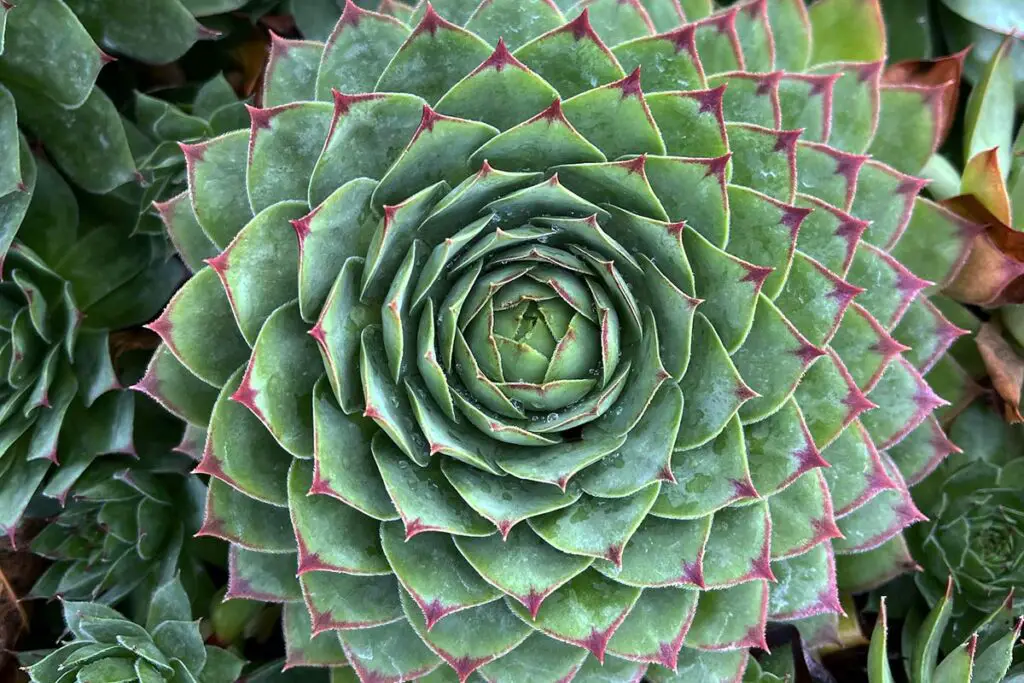
Must-Have Prolific Hens & Chicks Succulents
If you're a succulent enthusiast looking to expand your collection, you'll definitely want to consider adding some must-have hens and chicks succulents. These sempervivum varieties are known for their prolific growth and offset production, making them a popular choice among plant lovers.
Explore a curated list of must-have hens and chicks succulents for your collection.
There are several outstanding options that stand out. Let's take a closer look at some of these remarkable sempervivum varieties:
- Ruby Heart: This stunning variety features deep red rosettes with green centers, adding a vibrant hue to any arrangement.
- Cobweb Buttons: Known for its unique web-like hairs covering the leaves, this cultivar adds an intriguing texture to your garden.
- Green Wheel: With its compact rosettes that resemble tiny wheels, this sempervivum is sure to catch the eye.
- Purple Beauty: Sporting purple-tinted leaves with delicate white hairs, this variety adds an elegant touch to any pot or garden bed.
Discover sempervivum varieties that are known for their prolific growth and offset production.
One of the reasons why these hens and chicks succulents are highly sought after is their ability to multiply rapidly through offsets. Here are a few examples:
- The Pacific Devil's Food produces numerous offsets around the mother plant, creating an impressive display in no time.
- The Royal Ruby is another prolific grower, quickly filling up pots or garden beds with its abundant offspring.
- If you're looking for a cascading effect, the Red Rubin is an excellent choice, as its offsets spill over the edges of containers.
Learn about unique features that set these hens and chicks apart from other varieties.
Each of these must-have sempervivum cultivars possesses distinct characteristics that make them stand out. For instance:
- The Blue Boy showcases a striking blue-green coloration that is hard to find in other succulent varieties.
- With its chubby leaves and delicate pink tips, the Pink Champagne adds a touch of whimsy to any arrangement.
- The Silverine stands out with its silvery-gray leaves and contrasting red edges, creating a visually appealing contrast.
Find out why these specific sempervivum cultivars are highly sought after by enthusiasts.
Enthusiasts are drawn to these particular hens and chicks succulents for various reasons. Some appreciate their beauty and unique colors, while others enjoy their ease of care and ability to thrive in different conditions. Their compact size makes them ideal for small spaces or container gardening. Whether you're a seasoned collector or just starting your succulent journey, these 15 must-have sempervivum will undoubtedly bring joy to your home garden.
Comprehensive Guide to Growing and Caring for Sempervivum at Home
Growing and caring for sempervivum plants can be a rewarding experience for any avid grower. With their unique rosette-shaped foliage and ability to thrive in various conditions, these succulents have become increasingly popular among gardening enthusiasts. In this comprehensive guide, we will provide you with a step-by-step approach to successfully cultivate and nurture your sempervivum collection.
Ideal Growing Conditions
To ensure the healthy growth of your sempervivum plants, it is crucial to understand their ideal growing conditions. These hardy succulents are best suited for outdoor cultivation, as they require ample sunlight. Choose a location that receives at least six hours of direct sunlight each day. If you live in an area with scorching summers, consider providing some shade during the hottest part of the day.
Sempervivums prefer well-draining soil to prevent root rot. Mix equal parts of potting soil, sand, and perlite to create a suitable growing medium. This combination allows excess water to drain away while retaining enough moisture for the plants.
Watering Requirements
One of the key aspects of caring for sempervivums is understanding their watering needs. These drought-tolerant plants are adapted to survive in arid environments, making them susceptible to overwatering. It's essential to strike a balance between providing enough moisture and avoiding excessive dampness.
Water your sempervivums deeply but infrequently. Allow the soil to dry out completely between waterings before saturating it again. During hot summer months, increase the frequency slightly while remaining cautious not to overdo it.
Effective Propagation Methods
Expanding your sempervivum collection is an exciting prospect for any grower. Luckily, these plants are relatively easy to propagate through various methods:
- Offsets: Look for small rosettes, known as offsets or chicks, that grow alongside the mother plant. Gently separate them and replant in a new container or suitable garden spot.
- leaf Cuttings: Carefully remove a healthy leaf from the main plant and allow it to callus for a few days. Then place the leaf on well-draining soil and mist lightly until new rosettes form.
- Seed Propagation: Collect seeds from mature sempervivum flowers and sow them in a well-prepared seed-starting mix. Keep the soil consistently moist until germination occurs.
Preventing Common Issues
While sempervivums are generally low-maintenance plants, they can still face certain problems. Here are some tips to prevent common issues:
- Pests: Regularly inspect your plants for pests such as aphids, mealybugs, or slugs. Remove any infested leaves and treat with organic insecticides if necessary.
- Diseases: Ensure good air circulation around your plants to prevent fungal diseases like powdery mildew. Avoid overwatering and maintain proper spacing between each rosette.
- Overwatering: Sempervivums dislike excessive moisture, which can lead to root rot. Always err on the side of underwatering rather than overwatering to keep your plants healthy.
By following these guidelines and tips, you can successfully grow and care for your sempervivum collection at home.
Embrace the Beauty of Sempervivum in Your Home Garden
Sempervivum, also known as Hens and Chicks, are a stunning addition to any home garden. With their unique characteristics, vibrant colors, and ability to thrive in various climates, these cold-hardy succulents are a must-have for plant enthusiasts. Whether you're a beginner or an experienced gardener, growing and caring for sempervivum is a rewarding experience that will bring beauty and charm to your outdoor space.
In this comprehensive guide, we have explored the different varieties of Hens and Chicks, showcasing their diverse colors, shapes, and sizes. From the classic rosette forms to the more unusual types like Laxmi Kamal plants, there is something for everyone's taste. These plants not only add visual interest but also provide a low-maintenance option for those looking to enhance their garden effortlessly.
One of the remarkable aspects of sempervivum is their resilience in various climates. These cold-hardy succulents can withstand harsh winters and scorching summers alike. Whether you live in a temperate region or have extreme weather conditions, sempervivum will continue to flourish with minimal care. This adaptability makes them perfect for both indoor and outdoor gardening.
If you're looking for prolific Hens and Chicks varieties that quickly multiply and spread across your garden beds or containers, we have highlighted some must-have options. These vigorous growers will create beautiful carpets of rosettes that will catch anyone's eye.
To successfully grow sempervivum at home, follow our comprehensive guide on cultivation techniques and care tips. From choosing the right soil mix to providing adequate sunlight and water requirements, we've covered everything you need to know to ensure your plants thrive.
So why wait? Embrace the beauty of sempervivum in your home garden today! Transform your outdoor space into an enchanting oasis with these stunning succulents that are sure to impress both you and your guests.
FAQs: 15 of the best sempervivum to grow at home
Q: How often should I water my sempervivum plants?
A: Sempervivum is drought-tolerant and prefers dry conditions. Water sparingly, allowing the soil to dry out completely between watering sessions. Overwatering can lead to root rot and other issues.
Q: Can sempervivum be grown indoors?
A: Yes, sempervivum can be grown indoors as long as they receive sufficient sunlight. Place them near a south-facing window or under grow lights for at least six hours of direct sunlight each day.
Q: Are Hens and Chicks plants suitable for beginners?
A: Absolutely! Sempervivum is known for its low-maintenance nature, making it an excellent choice for beginner gardeners. They require minimal care and are quite forgiving if you make any mistakes along the way.
Q: Do sempervivum attract pests or diseases?
A: Sempervivum is generally resistant to pests and diseases. However, overwatering or poor air circulation can lead to fungal issues. Ensure proper drainage and airflow around the plants to prevent any problems.
Q: Can I propagate sempervivum from leaves or cuttings?
A: While it's possible to propagate sempervivum from leaves or cuttings, the most common method is through offsets or "chicks." These baby plants grow around the base of the mother plant and can be separated once they have developed their own roots.
These FAQs address some common concerns about growing and caring for sempervivum, helping you make informed decisions when adding these beautiful succulents to your garden.
Image Source: https://unsplash.com/

